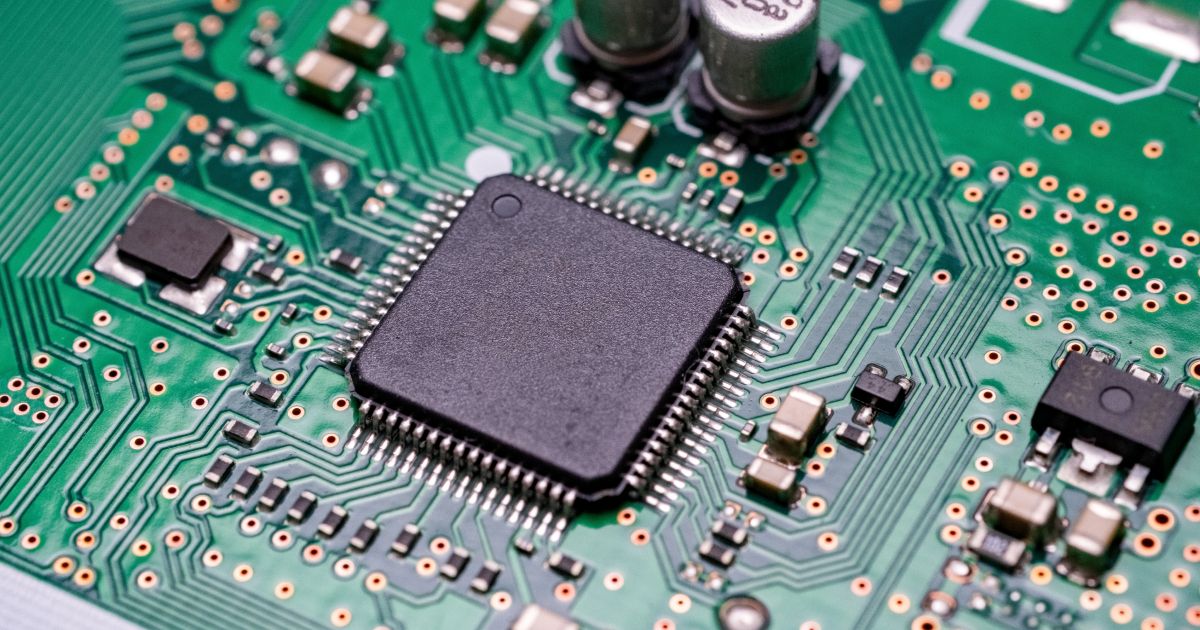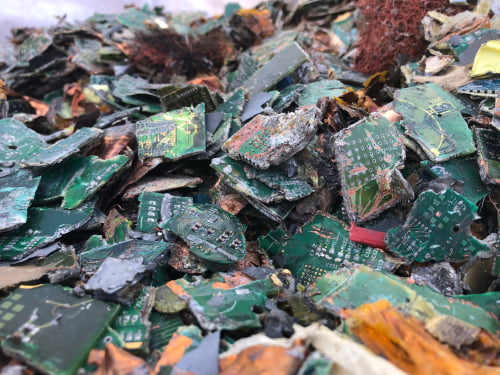Improper disposal of printed circuit boards (PCBs) can lead to severe environmental pollution and health risks due to the release of toxic substances into ecosystems. Recycling PCBs is crucial to mitigate these dangers, protect natural resources, and promote sustainability. In this blog, we’ll dive deep into the consequences of PCB environmental pollution, the toxic effects of e-waste, the risks of PCB contamination, the environmental benefits of PCB recycling, and the broader impact of PCBs on ecosystems. Let’s explore why responsible disposal and recycling are non-negotiable for a healthier planet.
What Are PCBs and Why Are They a Concern?
Printed circuit boards, or PCBs, are the backbone of modern electronics, found in everything from smartphones to industrial machinery. These boards are made of layers of materials, including metals like copper and gold, as well as plastics and sometimes hazardous chemicals. While they’re essential for technology, their improper disposal poses significant risks to the environment.
When PCBs are not disposed of correctly, they often end up in landfills or are incinerated, releasing harmful substances into the soil, water, and air. This leads to PCB environmental pollution, which can have long-lasting effects on both nature and human health. Understanding the composition of PCBs and the dangers they present is the first step toward addressing this growing problem.

The Environmental Impact of Improper PCB Disposal
Improper PCB disposal is a major contributor to environmental degradation. When these boards are discarded in landfills, the toxic materials within them can leach into the ground, contaminating soil and groundwater. Heavy metals like lead, mercury, and cadmium, often found in PCBs, are particularly harmful. For instance, studies suggest that a single improperly disposed PCB can release up to 1.5 grams of lead into the environment over time, enough to contaminate a significant volume of water.
Incineration, another common disposal method, releases toxic fumes into the air. These fumes contain dioxins and other pollutants that contribute to air pollution and can cause respiratory issues in humans and animals. The impact of PCBs on ecosystems is profound, as these toxins accumulate in the food chain, affecting wildlife and eventually humans through a process called bioaccumulation.
PCB contamination doesn’t just stay localized. Water currents and wind can carry pollutants far from their original source, spreading the damage across vast regions. This makes improper disposal a global issue, not just a local one. Addressing PCB environmental pollution requires immediate action to prevent further harm to our planet.
Toxic Effects of E-Waste: A Closer Look at PCBs
E-waste, or electronic waste, includes discarded PCBs and other electronic components. The toxic effects of e-waste are alarming, as these materials often contain hazardous substances that pose risks to both the environment and human health. PCBs, in particular, are a major concern due to their chemical stability, which means they don’t break down easily and persist in the environment for decades.
For humans, exposure to toxins from e-waste can lead to serious health issues, including neurological damage, reproductive problems, and even cancer. According to research, workers in informal e-waste recycling sites are often exposed to high levels of heavy metals, with blood lead levels in some individuals exceeding safe limits by up to 50%. Wildlife is equally affected, with studies showing that birds and fish near contaminated sites exhibit reduced reproductive success and developmental abnormalities due to PCB exposure.
The toxic effects of e-waste highlight the urgent need for proper handling and disposal methods. Without intervention, the cycle of contamination continues, harming generations of people and animals alike.

PCB Contamination: How It Spreads and Persists
PCB contamination is a pervasive issue because of how easily these pollutants spread and how long they remain in the environment. When PCBs are improperly disposed of, their components break down slowly, releasing toxins over many years. This persistence is due to the chemical stability of certain compounds, which resist natural degradation processes.
Contamination often begins in soil and water near disposal sites. For example, in areas with heavy e-waste dumping, groundwater samples have shown concentrations of heavy metals up to 100 times higher than safe levels. These pollutants then move through the ecosystem, absorbed by plants, ingested by animals, and eventually consumed by humans through food and water sources.
The long-term nature of PCB contamination means that even small amounts of improperly disposed waste can create significant problems over time. Cleanup efforts are costly and complex, often taking decades to fully remediate affected areas. Preventing contamination through responsible disposal is far more effective than trying to clean up after the damage is done.
The Environmental Benefits of PCB Recycling
Recycling PCBs offers a powerful solution to the problems caused by improper disposal. By recycling, we can recover valuable materials like copper, gold, and silver, reducing the need to mine new resources. This process conserves natural resources and cuts down on the energy required for raw material extraction. For instance, recycling just one ton of PCBs can recover up to 800 grams of gold, enough to produce thousands of new electronic components.
Beyond resource conservation, the environmental benefits of PCB recycling include a significant reduction in pollution. Proper recycling prevents toxic substances from entering landfills and incinerators, minimizing soil, water, and air contamination. Advanced recycling technologies can safely extract and neutralize hazardous materials, ensuring they don’t harm ecosystems.
Additionally, recycling reduces the carbon footprint of the electronics industry. Manufacturing new PCBs from raw materials generates substantial greenhouse gas emissions, whereas recycling uses far less energy. Some estimates suggest that recycling can reduce carbon emissions by up to 60% compared to traditional manufacturing processes. Embracing PCB recycling is a win-win for both the environment and the economy.

Impact of PCBs on Ecosystems: A Ripple Effect
The impact of PCBs on ecosystems is far-reaching, creating a ripple effect that disrupts entire food webs. When toxic substances from PCBs enter the environment, they affect everything from microscopic organisms to top predators. Aquatic ecosystems are particularly vulnerable, as water bodies near disposal sites often become contaminated with heavy metals and other pollutants.
For example, fish in contaminated rivers have been found with elevated levels of mercury and lead, leading to population declines and health issues in species that rely on them for food. Birds and mammals higher up the food chain suffer as well, accumulating toxins in their bodies over time. This bioaccumulation can lead to reproductive failures, weakened immune systems, and even death.
Terrestrial ecosystems are not spared either. Soil contamination from PCB disposal affects plant growth, reducing biodiversity and altering habitats. The loss of plant life impacts herbivores, which in turn affects predators, creating a cascading effect throughout the ecosystem. Protecting ecosystems from PCB pollution is essential to maintaining the balance of nature and ensuring the survival of countless species.
How Proper Disposal and Recycling Can Make a Difference
Adopting proper disposal and recycling practices for PCBs can significantly reduce their environmental impact. The first step is awareness—understanding the dangers of improper disposal and the benefits of recycling. Businesses and individuals alike must prioritize responsible e-waste management, ensuring that old electronics are sent to certified recycling facilities rather than landfills.
Governments and organizations also play a critical role by enforcing strict regulations on e-waste disposal and providing accessible recycling programs. Some regions have already made progress, with recycling rates for electronic waste increasing by 20% over the past decade due to better policies and infrastructure. Supporting these initiatives through compliance and advocacy can amplify their impact.
At an industry level, manufacturers can contribute by designing PCBs with recyclability in mind. Using eco-friendly materials and modular designs makes it easier to recover valuable components during recycling. Together, these efforts can create a sustainable cycle for electronics, minimizing waste and protecting the environment.
Steps to Responsibly Dispose of PCBs
Disposing of PCBs responsibly doesn’t have to be complicated. Here are some practical steps to follow:
- Identify Certified Recyclers: Look for facilities that specialize in e-waste recycling and adhere to environmental standards. These centers have the technology to safely handle and process PCBs.
- Avoid Landfills: Never throw old electronics or PCBs into regular trash bins, as they will likely end up in landfills and contribute to pollution.
- Participate in Take-Back Programs: Many electronics manufacturers and retailers offer programs to take back old devices for recycling. Check for local options in your area.
- Spread Awareness: Educate others about the importance of proper disposal and the risks of PCB environmental pollution. Collective action can drive larger change.
By taking these steps, you can play a part in reducing the toxic effects of e-waste and safeguarding ecosystems from contamination.
Conclusion: The Path to a Sustainable Future
The environmental impact of improper PCB disposal is a pressing issue that demands our attention. From PCB environmental pollution to the toxic effects of e-waste, the consequences of neglecting responsible disposal are severe, affecting ecosystems, human health, and the planet as a whole. However, the environmental benefits of PCB recycling offer a clear solution, conserving resources, reducing pollution, and protecting biodiversity.
By understanding the risks of PCB contamination and the broader impact of PCBs on ecosystems, we can make informed choices to support sustainable practices. Whether it’s through proper disposal, advocating for stricter regulations, or supporting recycling initiatives, every action counts. Let’s commit to responsible e-waste management and build a cleaner, greener future for generations to come.
 ALLPCB
ALLPCB







